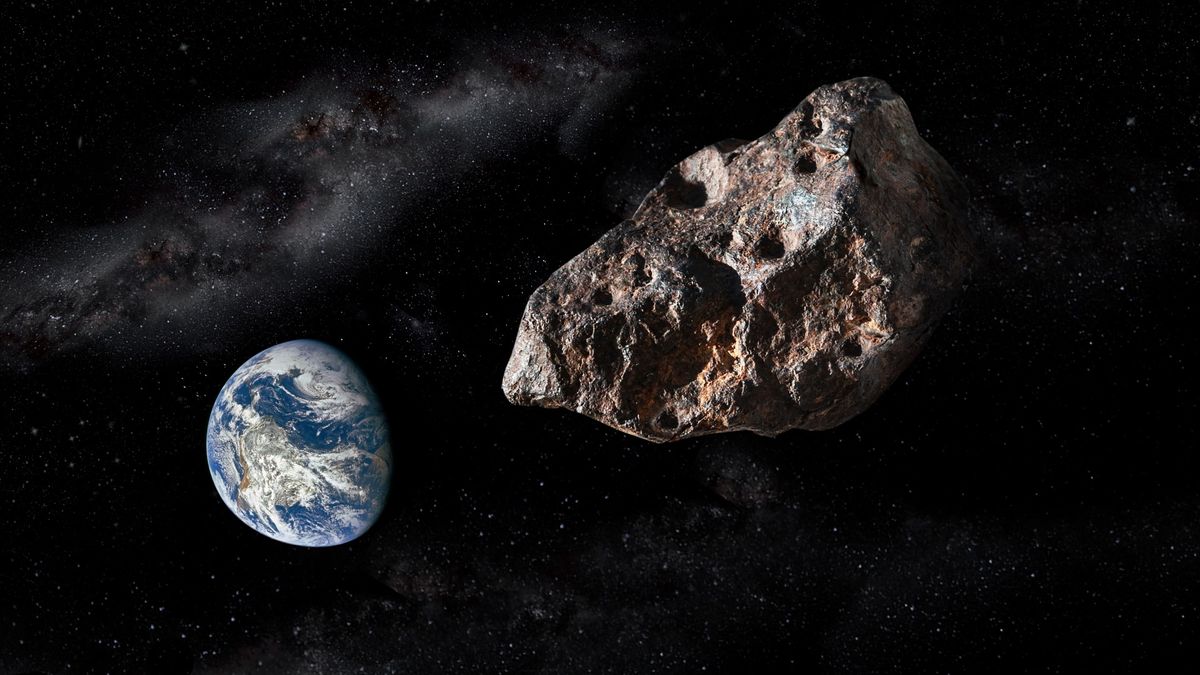
A skyscraper-size asteroid cruising the cosmos at 35,000 mph (56,000 km/h) will make a relatively close approach to Earth Thursday (April 6), zooming past our planet at about 7.5 times the average distance between Earth and the moon, according to NASA (opens in new tab). Fortunately, the meaty space rock will miss our planet by more than a million miles.
Astronomers estimate that the asteroid, named 2023 FM, measures somewhere between 393 and 853 feet (120 to 260 meters) in diameter, or roughly the height of a 40- to 80-story skyscraper. During its closest approach on Thursday afternoon, the asteroid will fly within roughly 1.8 million miles (2.9 million kilometers) of our planet, far beyond the orbit of the full moon.
The space rock's formidable size, coupled with its uncomfortably close trajectory, earns it the title of a potentially hazardous asteroid (PHA), meaning a space rock that could measure larger than 460 feet (140 m) in diameter and that could come within 4.65 million miles (7.48 million km) of Earth, according to NASA's near-Earth-object classification system.
Related: Could an asteroid destroy Earth?
NASA tracks thousands of PHAs, as even a slight, unexpected tweak to an asteroid's orbit could send it on a deadly crash course with Earth. Astronomers are constantly monitoring and recalculating these orbits — and thankfully, no collisions with PHAs are likely for at least the next 100 years.
In March, astronomers detected an Olympic swimming pool-size asteroid named 2023 DW, which initially appeared to have a 1-in-600 chance of colliding with Earth on Valentine's Day 2046 — a much higher risk level than average. However, researchers with the European Space Agency have since recalculated the risk of impact to be 1 in 1,584, meaning the asteroid is almost guaranteed to miss and scientists are no longer worried about it.
If a large asteroid ever appears on course for a direct impact with Earth, humans may be ready to deal with it. In September 2022, NASA's Double Asteroid Redirection Test (DART) mission successfully crashed a spacecraft into a small asteroid called Dimorphos, significantly altering the space rock's trajectory. While Dimorphos never posed a threat to Earth, the mission proved that redirecting asteroids with rocket impacts is a viable means of planetary defense — so long as astronomers have several years (or preferably decades) to plan for the impact, NASA said.
Science - Latest - Google News
April 06, 2023 at 04:00AM
https://ift.tt/VUzPl1C
'Potentially hazardous' skyscraper-size asteroid will zip past Earth Thursday - Livescience.com
Science - Latest - Google News
https://ift.tt/a1r9icK
https://ift.tt/XCBoL8x
Bagikan Berita Ini

















0 Response to "'Potentially hazardous' skyscraper-size asteroid will zip past Earth Thursday - Livescience.com"
Post a Comment